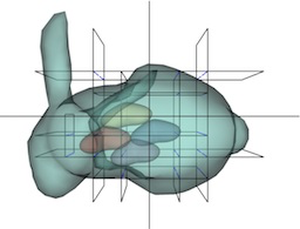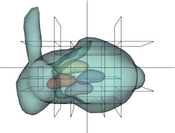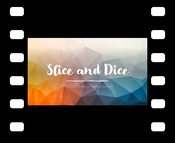Information
- Publication Type: Journal Paper with Conference Talk
- Workgroup(s)/Project(s):
- Date: October 2020
- Journal: Computer Graphics Forum (CGF)
- Volume: x
- Lecturer: Renata Raidou

- Event: PG2020
- Call for Papers: Call for Paper
- Conference date: 2020
- Pages: 1 – 12
- Keywords: Data Physicalization, Life and Medical Sciences, Anatomical Education
Abstract
During the last decades, anatomy has become an interesting topic in education—even for laymen or schoolchildren. As medical imaging techniques become increasingly sophisticated, virtual anatomical education applications have emerged. Still, anatomical models are often preferred, as they facilitate 3D localization of anatomical structures. Recently, data physicalizations (i.e., physical visualizations) have proven to be effective and engaging—sometimes, even more than their virtual counterparts. So far, medical data physicalizations involve mainly 3D printing, which is still expensive and cumbersome. We investigate alternative forms of physicalizations, which use readily available technologies (home printers) and inexpensive materials (paper or semi-transparent films) to generate crafts for anatomical edutainment. To the best of our knowledge, this is the first computer-generated crafting approach within an anatomical edutainment context. Our approach follows a cost-effective, simple, and easy-to-employ workflow, resulting in assemblable data sculptures (i.e., semi-transparent sliceforms). It primarily supports volumetric data (such as CT or MRI), but mesh data can also be imported. An octree slices the imported volume and an optimization step simplifies the slice configuration, proposing the optimal order for easy assembly. A packing algorithm places the resulting slices with their labels, annotations, and assembly instructions on a paper or transparent film of user-selected size, to be printed, assembled into a sliceform, and explored. We conducted two user studies to assess our approach, demonstrating that it is an initial positive step towards the successful creation of interactive and engaging anatomical physicalizations.
Additional Files and Images
Additional images and videos
Additional files
Weblinks
BibTeX
@article{raidou_slicedice,
title = "Slice and Dice: A PhysicalizationWorkflow for Anatomical
Edutainment",
author = "Renata Raidou and Eduard Gr\"{o}ller and Hsiang-Yun Wu",
year = "2020",
abstract = "During the last decades, anatomy has become an interesting
topic in education—even for laymen or schoolchildren. As
medical imaging techniques become increasingly
sophisticated, virtual anatomical education applications
have emerged. Still, anatomical models are often preferred,
as they facilitate 3D localization of anatomical structures.
Recently, data physicalizations (i.e., physical
visualizations) have proven to be effective and
engaging—sometimes, even more than their virtual
counterparts. So far, medical data physicalizations involve
mainly 3D printing, which is still expensive and cumbersome.
We investigate alternative forms of physicalizations, which
use readily available technologies (home printers) and
inexpensive materials (paper or semi-transparent films) to
generate crafts for anatomical edutainment. To the best of
our knowledge, this is the first computer-generated crafting
approach within an anatomical edutainment context. Our
approach follows a cost-effective, simple, and
easy-to-employ workflow, resulting in assemblable data
sculptures (i.e., semi-transparent sliceforms). It primarily
supports volumetric data (such as CT or MRI), but mesh data
can also be imported. An octree slices the imported volume
and an optimization step simplifies the slice configuration,
proposing the optimal order for easy assembly. A packing
algorithm places the resulting slices with their labels,
annotations, and assembly instructions on a paper or
transparent film of user-selected size, to be printed,
assembled into a sliceform, and explored. We conducted two
user studies to assess our approach, demonstrating that it
is an initial positive step towards the successful creation
of interactive and engaging anatomical physicalizations.",
month = oct,
journal = "Computer Graphics Forum (CGF)",
volume = "x",
pages = "1--12",
keywords = "Data Physicalization, Life and Medical Sciences, Anatomical
Education",
URL = "https://www.cg.tuwien.ac.at/research/publications/2020/raidou_slicedice/",
}


 example
example image
image paper
paper


